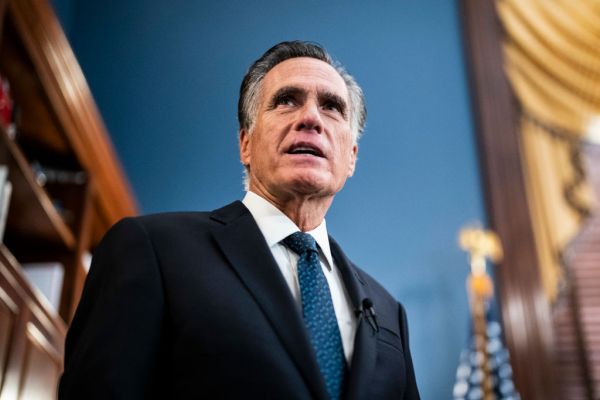The coronavirus pandemic has upended our economy in ways that we couldn’t have imagined even a few months ago. Nearly 40 million Americans are out of work. And while many white-collar workers continue to do their jobs from home or take time off to deal with the fallout from this pandemic, those lower down on the socioeconomic ladder are often still needed at work. They might not be doctors or nurses, but they are essential on the front lines nonetheless: nursing assistants, grocery store clerks, delivery drivers, and restaurant workers doing carryout and delivery.
They also happen to be the least likely to receive any paid sick leave or paid time off to care for their loved ones. Their circumstances have amplified the need for a paid leave policy in the U.S., both in response to the crisis and beyond. Congress acted by providing federally funded leave from work to employees of small businesses to care for family members or one’s own medical issues in the Families First Coronavirus Response Act. Now, a natural question is: Where does this leave us, and how does the current crisis affect future policy discussions over federal paid leave policy?
As various states reopen their economy in stages, many people find themselves expected to return to work while schools and childcare providers remain closed. The ongoing pandemic and uncertainty about childcare options in the fall mean that we may need emergency paid leave provisions for the foreseeable future. After all, it is far better to protect the connection between employers and employees by providing paid leave than people leaving the workforce entirely to deal with the short-term caregiving needs that resulted from this pandemic.
That said, policymakers should take caution in basing a permanent federal paid leave policy on this emergency experience. The environment we are in is unique, and there is a clear and meaningful distinction between emergency measures and policies necessary during usual times. Before making any permanent changes, policymakers should step back and reassess what we know about paid leave policies and what we have yet to learn.
How has COVID-19 changed the paid leave debate?
Before the Families First Coronavirus Response Act, the availability of paid leave in the U.S. was inadequate to handle a serious threat to public health. Less than half of workers in the lowest wage quartile receive any kind of paid sick leave. When people feel pressure to go to work while ill or when a family member is sick, it is problematic during typical times. During a pandemic, it can be fatal.
Similarly lacking was the availability of family leave to deal with the sudden closure of childcare centers and schools. Research from Isabel Sawhill of the Brookings Institution suggests that, prior to COVID-19, paid family leave covered approximately 17 percent to 50 percent of workers depending on the survey data used.
The Families First Act addressed these issues by requiring companies with fewer than 500 employees (with exemption possibilities for businesses with fewer than 50 employees) to provide two weeks of sick leave at full pay, two weeks at partial pay to care for an ill family member, and up to 12 weeks at partial pay for working parents in response to school and daycare closures. The federal government reimburses companies fully through tax credits, but companies still face the challenge of making up for lost work from an absent employee and may experience a time delay in receiving the credits. The provision was specific to the current public health emergency and will expire in December 2020. The rationale, backed by data, was that larger firms already provided paid leave at higher rates than small firms, and that the smallest firms may have trouble making up the lost work. Indeed, Kaiser found that the vast majority of large firms with over 200 employees already provided paid sick leave to their full time workers (94 percent) relative to 67 percent of small firms. Access to paid family leave, however, is far from ubiquitous irrespective of firm size. As such, a significant share of the workforce was left uncovered by the paid leave provisions.
This helps to explain why the utilization thus far seems limited. A recent Bipartisan Policy Center poll showed that only 8 percent of working parents with young children reported taking paid leave during the first week of April 2020 to care for their children, and 11 percent reported taking unpaid leave.
Another reason is that people must be employed to take paid leave, and the pandemic has resulted in mass unemployment. Additionally, Congress passed unemployment compensation that results in wage replacement above 100 percent for certain low-wage workers, which is far more generous than any of the federal paid leave policies. In a recent Bipartisan Policy Center poll, approximately 35 percent of small businesses that reported laying off workers or furloughing them said expanded unemployment insurance played a major role in their decision.
Employees may also be reluctant to ask for more benefits from their employers. The government is covering the expenses for paid leave for employees of small businesses through tax rebates, but employers face a burden having to make up for that lost work. In the same Bipartisan Policy Center poll, one in six small business owners reported that employees taking sick leave (16 percent) or caring for sick family members (18 percent) have been “very challenging.”
What has stayed the same?
The seemingly low utilization of paid leave during this crisis, complicated by rising unemployment, makes it hard to take lessons from the current paid leave provisions that can inform a permanent policy in the U.S. When conducting a natural experiment, you want to hold all other variables constant. In this environment, almost everything has changed.
When it comes to broad paid leave reform, the research and economics remain largely the same as they were before the pandemic. Prior to COVID-19, support for a national paid leave policy was gaining momentum, though largely around parental leave after the birth or adoption of a new child. For example, Congress granted employers tax credits for providing family and medical leave in the 2017 tax overhaul, and President Trump signed a provision offering federal employees 12 weeks of paid parental leave at the end of last year. Additionally, lawmakers proposed a bipartisan and bicameral bill last year to advance child tax credits to cover costs related to parental leave.
The research substantiates support for paid parental leave. As members of the AEI-Brookings Paid Leave Working Group, we studied the literature on paid parental leave, which shows positive economic and health outcomes for parents and children at little employer cost. For children, the importance of bonding with parents in the early weeks of life could not be clearer from the literature. This makes paid parental leave more than just an employment benefit and something of a societal obligation to support healthy child development regardless of a parent’s wage, occupation, or company size.
But when it comes to paid leave to care for an ill family member or for one’s own illness the research is more complicated, partly because of the potential for recurring usage, the long and intermittent durations of workplace absence, and the unpredictability of when medical events might occur and the verification that is required. After our review of the literature, we were concerned that an extended public paid leave program for family and medical leave could raise business costs, reduce overall employment, and increase the potential for fraud if not properly structured. The U.S. very well might still need a federal family and medical leave policy to cover workers without access to such leave—and we need more research to inform these proposals—but this pandemic has not filled our knowledge gaps on the employment or budgetary effects of such policies.
What does the future hold?
Given the virus trajectory, it is likely that we will need an extension of emergency paid leave for the recovery, should schools remain closed and the virus continue beyond the summer. But it is important to separate emergency provisions from permanent policy, for which the underlying research remains the same. This leads us to several conclusions:
First, we need emergency paid leave policies during a public health crisis to keep ill people from working and to allow workers time to care for their family members, whether such provisions are fully utilized or not. This is especially crucial for longer forms of leave, such as time off to care for children when schools close; costs that many employers cannot easily absorb and employees cannot anticipate. That makes it important for government to fund this type of leave. Paid leave provides employees with more options to balance work and personal need, which is crucial when facing a pandemic and historic unemployment. Additionally, the wage replacement needs to be at least as high as unemployment compensation to avoid incentivizing unemployment and severing the connection between employee and employer.
Second, company provision of paid sick leave is likely to be a lasting change. As companies adapt to phased reopenings with greater levels of sanitation and social distancing, workers will need paid sick leave to limit contagion. For employers, the cost of providing sick leave will be much less than the potential for a major coronavirus outbreak that shutters businesses once again. Paid sick leave is also usually limited in its duration, making the cost more manageable for employers than longer forms of leave like that needed to care for children when schools close or for one’s own long-term medical problems. Ideally, employers will see the need to provide paid sick leave to all workers following the pandemic, irrespective of company size, wage level, or occupation.
Third, the current crisis has not changed the case for paid parental leave, for which the benefits remain clear. Policymakers should not allow the increased federal spending that was necessary to deal with the current pandemic to deter them from adopting a federal paid parental leave policy, which had considerable bipartisan momentum before this crisis. Significant questions remain around structuring a broader paid family and medical leave, for which we need better answers. For the time being, we need policy attention to focus on what workers, families, and businesses need to re-engage and recover.
Many things will change in the months and years to come based on our experiences from this pandemic. What comes next will require a thoughtful look at the decades of evidence around paid leave thus far, a next phase of paid leave provision calibrated for the reopening and recovery, and the pursuit of long-term reform that balances employee needs, employer costs, and budgetary realities.
Abby M. McCloskey is an economist and founder of McCloskey Policy LLC. She has advised multiple presidential campaigns. Angela Rachidi is the Rowe scholar in poverty studies at AEI.
Photograph of Chef Mo Major exercising in the backyard with his children Marley, 4, and Max, 5, on March 26, 2020 in Mount Vernon, New York, by John Moore/Getty Images. Mo was laid off as a chef consultant and his wife furloughed as a pre-school teacher as schools closed due to the coronavirus pandemic. The family left their apartment in New Rochelle to live temporarily with Geri’s parents who have a larger home in nearby Mount Vernon.






Please note that we at The Dispatch hold ourselves, our work, and our commenters to a higher standard than other places on the internet. We welcome comments that foster genuine debate or discussion—including comments critical of us or our work—but responses that include ad hominem attacks on fellow Dispatch members or are intended to stoke fear and anger may be moderated.
You are currently using a limited time guest pass and do not have access to commenting. Consider subscribing to join the conversation.
With your membership, you only have the ability to comment on The Morning Dispatch articles. Consider upgrading to join the conversation everywhere.